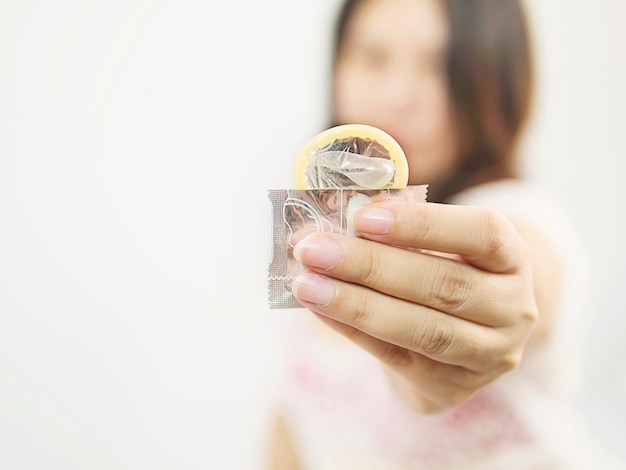
For many of us, learning about sex as we grew up came from a mix of movies, TV shows, chatting with friends, and maybe a couple of awkward talks with our parents. Along the way, you probably picked up some misinformation, especially regarding contraception like condoms and IUDs.
Whenever you decide to become sexually active—whether it’s your first time or with a new partner—having a conversation about contraception is super important. Aside from the birth control pill, condoms are one of the most common forms of contraception. They’re easy to find at local pharmacies and are even available for free at certain family planning clinics or LGBTQ-friendly spaces. Despite this, some people still hesitate to use them.
Here’s the deal: when used properly, condoms are a fantastic option for preventing pregnancy, avoiding STIs (sexually transmitted infections), and staying in charge of your sexual and reproductive health. Let’s clear up some common myths about condoms so you can make confident, informed choices.
### Myth #1: Sex isn’t as enjoyable with a condom.
Truth: When both partners are on the same page about birth control, sex can actually be better. You can focus on connecting and enjoying yourselves rather than stressing about unplanned pregnancies or STIs. If condoms feel uncomfortable, it might be a sizing issue, incorrect use, or a lack of proper lubrication—all things that can easily be adjusted.
### Myth #2: Condoms come in one size.
Truth: Condoms aren’t one-size-fits-all. They come in different sizes, shapes, textures, and even colors. The idea that someone might be “too big” for a condom isn’t true—most standard condoms are surprisingly stretchy. However, finding the right fit matters since a condom that’s too small can break, and one that’s too large can slip off. If you’re not sure what works best, try out a variety pack to find your perfect match.
### Myth #3: Doubling up on condoms is safer.
Truth: Nope, using two condoms at once is actually worse. The friction between the two can cause breakage and leave you unprotected. Stick to using one condom correctly—it’s the best way to reduce risks.
### Myth #4: Condoms don’t really protect against STIs.
Truth: When used properly, condoms do a great job of protecting against STIs, including HPV, and preventing pregnancy about 98% of the time. They work by creating a barrier that stops the exchange of bodily fluids. Just remember to wear one for the entire duration of sex and not just at climax—pre-ejaculate fluids can also carry risks. Since many STIs don’t show symptoms (up to 80% go unnoticed!), using condoms consistently is a crucial step in protecting your health.
### Myth #5: I’m allergic to latex, so I can’t use condoms.
Truth: If you’re allergic to latex, you can still stay protected. There are condoms made from materials like polyurethane or polyisoprene, which are great alternatives and just as effective. One thing to avoid, though, is natural options like lambskin condoms—they don’t protect against STIs. Stick with latex-free varieties designed for sexual health and safety.
### Myth #6: Condoms are only for traditional male-female sex.
Truth: Condoms work for all kinds of sexual activity, whether it’s vaginal, oral, or anal. Beyond external condoms (used on a penis), there are also internal condoms, often referred to as female condoms, which can be inserted into the vagina or rectum. If used correctly, these options are very effective.
### Myth #7: Vaseline is a good lubricant to use with condoms.
Truth: Definitely not. While adding lubrication can make condoms more effective and prevent breaking, you should always use water-based or silicone-based lubricants. Products like Vaseline, lotions, or baby oil can cause the condom to weaken and tear. Stick with lubricants specifically labeled as condom-safe.
### Myth #8: Condoms are the only contraception I need.
Truth: While condoms are excellent at protecting against STIs and pregnancy, combining them with another form of birth control—like the pill, shot, or IUD—provides an added layer of protection. Keep in mind that most other forms of birth control don’t protect against STIs, so using a condom every time you have sex is still a smart move.
### Wrapping it up
There are a lot of misconceptions about condoms, but the reality is they’re safe, effective, and easy to get. They don’t require a prescription, and they’re the only contraceptive method that prevents both pregnancy and STIs, including HIV, gonorrhea, and chlamydia. If you have questions or concerns about using condoms, don’t hesitate to bring them up with your doctor during your annual checkup. Taking care of your sexual health is an important step in overall well-being!